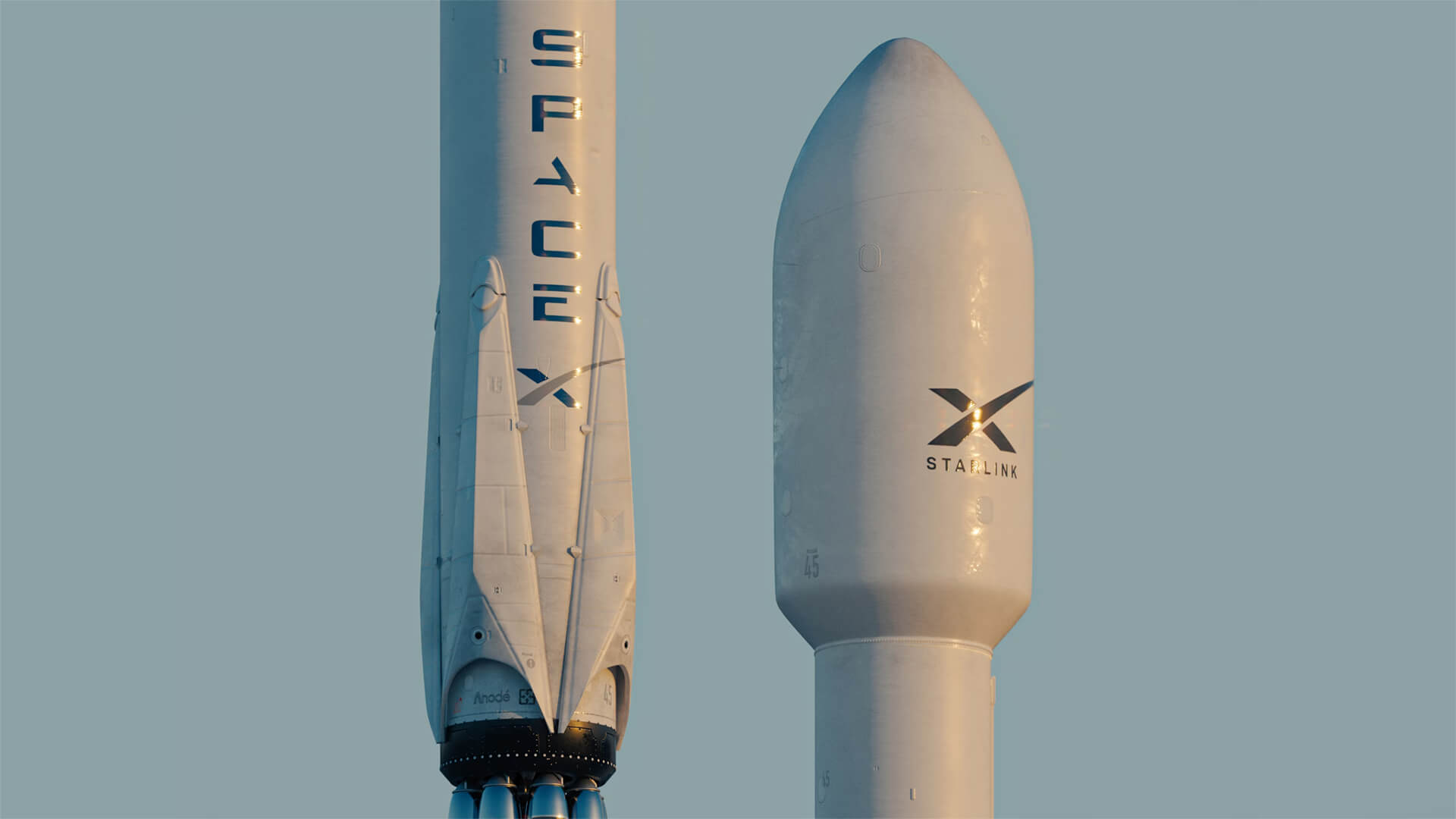Before we dive into today’s video, watch this video I sent out a year ago for a refresher on a few of these technologies and the limits to innovation. Click the button below to watch…
SpaceX’s successful booster recovery, is not just very impressive, but could also dramatically reduce the cost of launching items into orbit. Don’t pull the trigger on that summer vacay to Mars quite yet, but there are some exciting possibilities for space-based manufacturing now on the table.
There are four key areas that this could impact: precision lenses, drugs, fiber optics, and quantum computing. Each of these areas would benefit from being manufactured in a gravity-free environment. Lenses would get finer precision. The drug industry would be able to grow longer, more complex proteins. Creating fiber optic cables would be much more efficient. Quantum computing would get error-free crystal growth.
Each of these industries would see massive leaps and advancements, but the price needs to be right. So, we’re moving in the right direction, but still have some space – hah – for improvement. And further down the road, there is a potential for setting a 3D printing facility to manufacture space infrastructure while in orbit, which could change space travel forever. Let’s not get over our skis though.
Here at Zeihan on Geopolitics, our chosen charity partner is MedShare. They provide emergency medical services to communities in need, with a very heavy emphasis on locations facing acute crises. Medshare operates right in the thick of it, so we can be sure that every cent of our donation is not simply going directly to where help is needed most, but our donations serve as a force multiplier for a system already in existence.
If you sign up for our Patreon page in the month of October, the proceeds from your subscription for the remainder of 2024 will be donated directly to MedShare. So, you can get our all of the perks of joining the Patreon AND support a good cause while you’re doing it.
We encourage you to sign up for the Patreon page at the link below.
Transcript
Hey, everybody. Peter Zeihan here. Coming to you from, I don’t even know where I am at the moment, anyway. If you’ve been following for a while, you know, about a year ago, I recorded a video that listed the six kind of breakthroughs technologically, that I thought might deflect the world into a more productive, happy direction. And, in the last couple of weeks, we’ve had a number of issues that have caused me to revisit these technologies.
We’re going to do this very short series about what has changed and the sort of impact it can have. And so this first video is coming to you from New Orleans, where we talk about space technology. Hey, everybody. Peter Zeihan here. Coming to you from the Superdome in New Orleans. And while I’ve been in the Big Easy, a couple of interesting things have happened around the world.
The one I want to talk about today is SpaceX’s successful booster catch. They launched a rocket up—all rockets, in order to reach orbit, require boosters. You need extra fuel so you can achieve escape velocity. And we already know for several years that SpaceX has been recovering their rockets for reuse. And they can even land them vertically now.
But the boosters, until now, have been just discarded. Well, this time, they were able to let the booster land back at a different facility and land itself, and they grabbed it and basically had it on the platform then. Number one, that’s amazing. But what I actually found more interesting was that they then immediately refueled it, meaning that now, with lots of testing, they have to do this over and over again to prove that it’s a viable model.
But they caught it on the first try, which means that the main launch vehicle is now reusable and the boosters are reusable. And this drastically, potentially reduces the cost of launching things into orbit. If you go back to the ’70s and especially the ’80s with the onset of the space shuttle, getting stuff into orbit was more than $50,000 per kilogram.
With SpaceX having the main module be reusable, they’ve gotten that down to $1,500 per kilogram. And now that the booster looks like it’s going to be reusable as well, that number is probably going to drop by half to a third of what we’ve become used to. And when you’re talking about $500 per kilogram or less, all of a sudden the economics of space start to change and people can come and go on a lot more frequency.
I mean, we’re basically starting to talk about some Gattaca-level shit here. Now, I’m not too interested in space tourism because, you know, that’s just a few people going up, joyriding, and coming back, and I’m not too interested in things like Mars or even the moon, because even with this technology, you’re still talking several days to get there and back.
The economics of that hasn’t changed all that much, but we can now start thinking about manufacturing. Basically, what you’re looking at are things that are high-value products, that you can fly the raw materials up and then bring the finished product back down. There’s kind of four categories that I see that kind of play in that pond. The first one, and probably the one that will get going the most, are lenses, which I know doesn’t sound very exciting.
But when you think about what we’re doing in semiconductors right now, the lenses that go into the lithography machines are among the most finely milled things that we have on the planet. Let’s keep in mind that we are now at the stage for maybe semiconductors, where the individual resistors are not all that much bigger than the individual molecules.
So you’re talking about manipulating objects at the atomic level. When you’re doing that, precision is absolutely critical. Okay, so that’s number one. Number two is drugs. Most of the more advanced drugs that we’re developing today are proteins. And proteins can only form so long in gravity because they collapse on themselves or just get mushy and then they’re useless.
So if you can grow them in orbit, you are no longer limited in the length of the protein that you can grow, especially when you’re talking about tailored drugs for individuals. You can easily fly up the medium and then fly down the finished product. I swear I’ve been on aircraft carriers that are quieter than this town. Anyway, what was the third one?
Fiber optic cable? Now, the stuff that is in your house, in your neighborhood, probably costs in the vicinity of a dime to a quarter per meter. That’s not what we’re talking about here. We’re talking about the new stuff, something called Zebulon, which is a more specialized system that can communicate terabits of information per second. It runs at least $100 per meter and upwards of a thousand, based on how good of the stuff you want.
The problem is in the manufacturing process: it crystallizes. And in order to control that, you need very, very precise conditions. So space basically—you can grow it like a crystal and do whatever you need to do with it. Now, you have to, like all these other things, bring it back home. And that’s going to put a limit on what you can do. When you’re talking about something that is 10,000 times as valuable, there’s a little bit of margin in there for transport cost, even if you happen to be going way up.
The fourth thing involved in experimental technologies—one of the reasons that quantum computing has not happened yet is because each machine is different. It’s handcrafted. It’s not just that it hasn’t been serialized or regularized; it’s that we’re inventing ways to perceive and manipulate quantum space. So every single thing about each of those machines is unique and precise. And if you can grow the crystals that do the focusing in space, then you don’t have the errors that you’re going to get and the flaws you’re going to get on a more terrestrial system, while also considering that a quantum computer isn’t all that big.
You’re talking launch costs versus the benefit you get—that’s pretty high. So those are the big four. There is a fifth one to consider, although it would require a significantly larger manufacturing system, and that’s using things like 3D printing technologies to print stuff in space for space. I’m not talking here about a trip to Mars, although I’m sure that’s what Elon Musk wants to go on and on about.
I’m talking about something a lot more basic: satellites. Because if you can drop launch costs to the point that you can build a satellite manufacturing facility in orbit, then all of a sudden you can have a satellite bay and repair facilities and manufacturing facilities also in orbit. And that would dramatically lower the cost of things like information transmission and raise the possibility of even more manufacturing.
And yes, eventually, in time, maybe a moon base or even a trip to Mars. Okay, that’s it for me. I am going to go to a quieter city.








